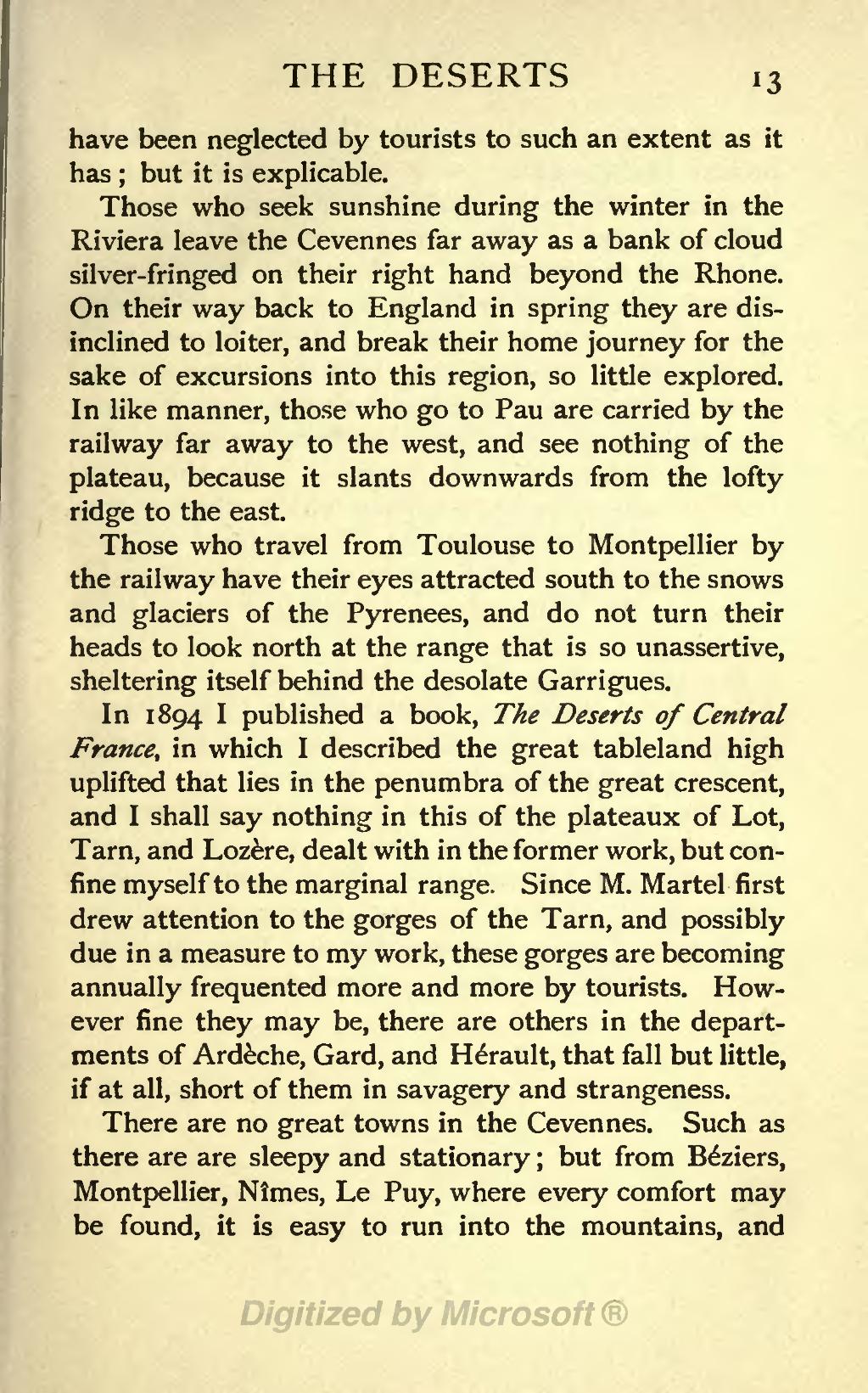have been neglected by tourists to such an extent as it has; but it is explicable.
Those who seek sunshine during the winter in the Riviera leave the Cevennes far away as a bank of cloud silver-fringed on their right hand beyond the Rhone. On their way back to England in spring they are disinclined to loiter, and break their home journey for the sake of excursions into this region, so little explored. In like manner, those who go to Pau are carried by the railway far away to the west, and see nothing of the plateau, because it slants downwards from the lofty ridge to the east.
Those who travel from Toulouse to Montpellier by the railway have their eyes attracted south to the snows and glaciers of the Pyrenees, and do not turn their heads to look north at the range that is so unassertive, sheltering itself behind the desolate Garrigues.
In 1894 I published a book, The Deserts of Central France, in which I described the great tableland high uplifted that lies in the penumbra of the great crescent, and I shall say nothing in this of the plateaux of Lot, Tarn, and Lozère, dealt with in the former work, but confine myself to the marginal range. Since M. Martel first drew attention to the gorges of the Tarn, and possibly due in a measure to my work, these gorges are becoming annually frequented more and more by tourists. However fine they may be, there are others in the departments of Ardèche, Gard, and Hérault, that fall but little, if at all, short of them in savagery and strangeness.
There are no great towns in the Cevennes. Such as there are are sleepy and stationary; but from Béziers, Montpellier, Nîmes, Le Puy, where every comfort may be found, it is easy to run into the mountains, and
